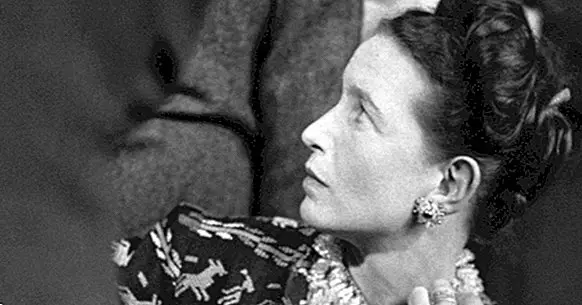The feminist theory of Simone de Beauvoir: what is woman?
In the mid-twentieth century, the Western world experienced an unprecedented political, social and ideological shock. After women gained the right to vote in many countries, a part of society considered what happened to those aspects of life in which men continued to dominate the female sex. This malaise, which later gave rise to the second wave of feminism, had in one of its fruits the work of the philosopher Simone de Beauvoir , in which this thinker tried to understand what the nature of femininity was.
Next we will see what are the main characteristics of the feminist theory of Simone de Beauvoir and the way in which it has influenced psychology and philosophy.
- Related article: "50 phrases of Simone de Beauvoir to understand their thinking"
Who was Simone de Beauvoir? Short biography
Simone de Beauvoir was born in 1908 in the French capital, Paris. During his youth he studied philosophy at the Sorbonam first, and then at the École Normale Supérieure. In this second institution he met Jean-Paul Sartre , and at that moment he began an affective relationship that lasted all his life. Finally, he died in Paris in 1986.
Sartre's existentialist influences can be seen in The Second Sex, the best known work of Beauvoir, although the application of this perspective to gender studies was totally original, as we shall see. On the other hand, besides developing an important theoretical body for feminism, this philosopher was also a novelist.
- Maybe you're interested: "What is radical feminism?"
The theory of Simone de Beauvoir: its essential principles
These are the main characteristics of the philosophical work of Simone de Beauvoir:
1. Recognize the masculine as the point of reference
The point of departure of Beauvoir was to realize that all the cultural productions of humanity, from art to the use of language, have man as a central point, the main reference.
For example, when expressing the idea of "being human" the figure of man is used by default , or that of the man and the woman, but never that of the woman. Another example would be that, many times, developing the feminine version of something consists of adding unequivocally feminine attributes to "neutral" models. For example, there are products with a version "for women" that differ from the standard model for being pink, pointing out that the standard model is actually masculine. The same thing would happen in politics: the normal and expected thing is that politicians are men.
2. The concept of "the Other"
From the previous idea, Simone de Beauvoir develops the idea of "the Other", or rather, "the other". This category serves to express in a visual way the fact that the female gender moves around the periphery of the human is an attribute that is not integrated into the first, but rather an extension of this, while the masculine itself is inseparable from the idea of the human as if they were synonyms.
3. A male saga of domination
Linked with the previous elements is the corroboration that history, for all purposes, It has been written by men, both literally and symbolically . Simone de Beauvoir sees in this a symptom of a phenomenon of domination and subjugation of women, and in turn the reason why women have been alienated from all aspects of life and symbolic production.
4. No woman is born, it becomes so
Summing up, we will see that for Simone de Beauvoir the point of reference for the human is man and that the feminine is, in any case, a specific attribute not comparable to the concept of the masculine, since it is defined according to its proximity or distance from this reference point .
The conclusion drawn from this is that the feminine is, in itself, something that has been designed and defined by man and imposed on women. This is summarized in his famous phrase "you are not born a woman, you become one". In short, women they are not in a way foreign to history and politics , but rather because of the dominance of the masculine gaze over "the Other".
5. For a non-alienated femininity
The theory that Simone de Beauvoir draws in The Second Sex it is not simply a description of what she considered reality to be; adhered to this was a moral indication of what should be done and is good . In particular, this philosopher pointed out the need for women to define their own identity outside the male gaze, without being coerced by the impositions on the part of that moral and intellectual reference fed by centuries and centuries of domination.



















